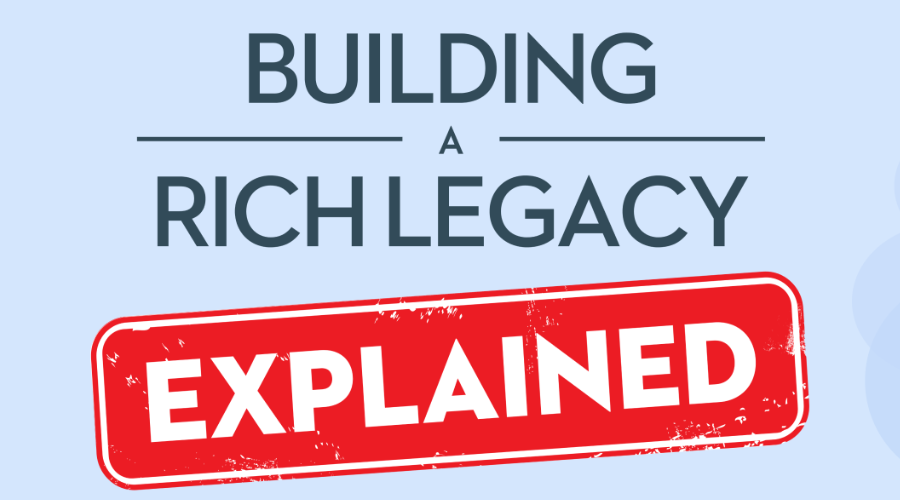What is a line of credit loan and how does it work?
Lines of credit in Canada are extremely popular: around three million Canadians have a home equity line of credit, while many more have a personal line of credit in Canada. So, what is a line of credit loan and why is it so popular?
A line of credit is a loan with a borrowing limit that your lender will set when you apply for it. You can take out as much money as you need, up to the borrowing limit, and the money can be used for any reason. As you pay off your line of credit loan, the amount you pay off becomes available to borrow again.
In this article, we will answer key questions including: how to get a line of credit; how to use a line of credit; what is a personal line of credit; how to get approved for a line of credit (and how difficult this is); what is a secured line of credit in Canada; and personal line of credit interest rates.
How does a line of credit in Canada work?
You pay interest only on what you borrow, and the loan can be available to you for years without you having to actually draw from it. You don’t have to make principal line of credit payments: the minimum monthly payment required is usually just the interest.
With a line of credit in Canada, you can pay back the money you owe at any time. Your lender will decide on the amount of the loan, the line of credit payments required, the interest rate and other line of credit requirements.
Most lenders allow you to draw from your line of credit in Canada in several ways:
- From an ATM
- Cheques
- Debit card
- Telephone banking
- Online banking
There can be costs involved when getting a line of credit. If it’s secured on your home, you may have to have your home’s value appraised, there could be legal costs involved, and some lenders or mortgage brokers could charge a set-up or admin fee. When you’re looking into line of credit requirements, ask your lender about any possible fees.
What is a line of credit statement? This is a monthly update of your account: it will include your line of credit limit, the interest rate, the outstanding balance, what was paid off the previous month and your minimum payment for the coming month.
How is a line of credit different from other loans?
In some ways, a line of credit is similar to credit cards, in that you have an agreed lump sum from which you can draw at any time, for any reason. The key differences are that with a line of credit, you only have to pay the interest as a minimum payment, and personal line of credit interest rates and home equity line of credit rates are typically a fraction of the rates charged by credit cards.
With installment loans (such as a personal or auto loan), you are lent a set amount of money and start paying interest on that amount immediately. With a line of credit, you only pay interest on the amount you actually borrow. With installment loans, you have to make a set amount of equal monthly payments that include principal and interest, so the full loan is paid off within a defined period of time (and the money is no longer available to you after you pay it off).
With a line of credit, there are no set monthly payments (you can pay as little as the interest or as much as the entire amount owed, at any time). There is typically no defined time period for paying off the loan, and when you pay off what you owe, that amount becomes available to borrow again.
Types of line of credit loans
HELOCs: Home equity lines of credit are the most common type of secured line of credit in Canada. The amount you can borrow depends on how much home equity you have, with lenders typically allowing for a secured line of credit in Canada of up to 65% of the value of your home (including other loans secured on it).
Here’s an example:
Your home is worth $700,000
65% of its value is $455,000
Your mortgage is $100,000
The maximum HELOC amount would be $355,000. You can calculate the amount using our HELOC Calculator in Canada.
Personal Line of Credit
A personal line of credit is very similar to a HELOC, except that funds are not secured against your home. Lenders see this as more of a risk, so personal line of credit interest rates in Canada can be considerably higher than rates for home equity lines of credit. Also, personal lines of credit in Canada can be harder to qualify for, with stricter line of credit eligibility (see below).
Business line of credit
A business line of credit provides businesses with funds from which they can borrow as needed, on an ongoing basis. The amount and the interest rate will depend on the company’s financial situation and profitability.
Secured versus unsecured line of credit
What is a secured line of credit? This is a loan secured against an asset. In the case of a HELOC, it is secured against the home. If you fail to make your payments, the lender can force the sale of your home to pay the debt. What is a secured personal line of credit in Canada? This is where your loan is secured against your investments, which can be sold to pay off the debt if you default. Secured lines of credit almost always offer the lowest interest rates and large lines of credit.
What is an unsecured line of credit? Unsecured loans have no collateral to back them up and so usually have higher interest rates and are not such large lines of credit. They are the only lines of credit available to people who don’t own a home or investment assets.
What is a line of credit’s typical interest rate?
Usually, the interest rate on a line of credit is variable. It is reliant on the bank’s prime lending rate, which in turn is based on the Bank of Canada’s (BoC) prime rate (currently 2.45% at the time of publishing this article in August 2021). This means it can go up or down over time, whenever the BoC changes its rate. If you have a decent credit score, many lenders will offer a rate of prime plus 0.5% — this would currently mean a rate of just 2.95%.
What is a personal line of credit loan in Canada likely to cost? A personal line of credit requirements typically includes a good credit score and provable income. The higher your score, the lower the interest rate. Also, getting a personal line of credit that is secured on investment assets will normally have a lower interest rate than unsecured lines of credit. If you have decent credit, your interest rate could be anywhere between 5‑9%.
Can you get a line of credit loan with no credit check? Some lenders have a line of credit eligibility that doesn’t take into account your credit score. However, you have to pay for this more flexible line of credit eligibility: some line of credit loans with no credit check can have interest rates as high as 40% and up. If you’re securing the loan against your home, some companies’ line of credit requirements allow for poor credit, and these rates are typically considerably lower than for unsecured lines of credit.
How to get approved for a line of credit
If you’re wondering how to get a line of credit, you can start by talking to your bank. Line of credit eligibility with banks can be quite strict, however. You will typically need:
- A good credit score
- Proof of sufficient income (much like when you apply for a mortgage)
- Good debt service ratios (when applying for a HELOC)
- Sufficient home equity (when applying for a HELOC)
How to get a line of credit without owning a home or other assets: A personal, unsecured line of credit can normally be arranged. As mentioned above, the interest rate will depend on your credit score and the lender’s line of credit requirements.
How to get approved for a line of credit if you have poor credit: Some specialized lenders have a more flexible line of credit eligibility and allow for poor credit, but you will pay for it with high-interest rates.
How to get a line of credit with little income: Getting a line of credit when you own your home is fairly easy. However, the rate may be high and the line of credit payments can be hard to make if your income is very low (and you could lose your home if you default).
How to get approved for a line of credit when you’re retired: Getting a line of credit for retirees is definitely possible, especially if you have a decent retirement income, but it can take a long time to pay off if you have a small pension.
Pros and cons of a line of credit
Pros of a line of credit
Knowing how to use a line of credit responsibly will have an effect on their pros and cons. These are some key advantages:
- Usually much lower interest rates than other types of loans (especially with HELOCs)
- Much more flexible than installment loans
- Payments can be anything from the minimum amount to the full loan
- Excellent option if you don’t have emergency savings
- You only pay interest on what you borrow
Cons of a line of credit
Knowing how to use a line of credit is particularly important when avoiding some of its disadvantages, which include:
- Unsecured loans can be hard to qualify for and have high-interest rates
- Line of credit payments can quickly get out of control
- Interest rates can go up, which makes budgeting difficult
- You can lose your home if you default on your HELOC
- If you have low income and/or bad credit, interest rates will be high
- It can be easy to quickly reach your credit limit
- A badly managed line of credit can damage your credit score
How to pay off a line of credit
Knowing how to use a line of credit is a key factor in paying it off. Because there is no time-limited repayment schedule, you need far more discipline to pay it off within a reasonable time period.
You can ask your lender to work out how much you would need to pay per month to reduce your balance to zero over your preferred time period (for example, three years). Then, set up a direct debit payment so this amount leaves your account automatically. This will make paying off your line of credit much easier.
Alternatively, when the time comes to renew your mortgage, you could refinance, add the line of credit total to your mortgage and then pay it off through your (now higher) mortgage payments.
An easier and often cheaper alternative to lines of credit
For homeowners aged 55-plus, there is a very good line of credit alternative (even to HELOCs): a reverse mortgage. A reverse mortgage is typically easier to qualify for than a line of credit because qualification isn’t based on your credit score or income. With a reverse mortgage, you can access up to 55% of the appraised value of your home in tax-free cash.
Also, for those borrowers with low income or a lower credit score, a reverse mortgage can be a much cheaper option: at the time of writing, HomeEquity Bank’s CHIP Reverse Mortgage rates start as low as 6.99%, significantly lower than many line of credit rates. You can view all of our up-to-date rates.
You can choose to receive the lump sum all at once or in monthly payments.
And, crucially for retirees on a limited income, you don’t have to make any regular mortgage payments. You can choose to make interest payments, but you don’t have to. You only pay back what you owe when you sell your home or move out, so you could access up to 55% of your home equity without it impacting your retirement income.
Contact us at 1-866-522-2447 or use the reverse mortgage calculator to find out how much you could borrow with a reverse mortgage, a potentially cheaper and easier loan option than a line of credit.































